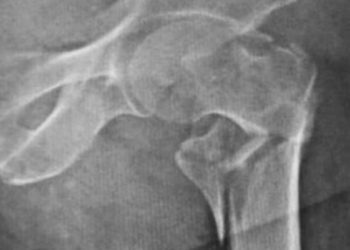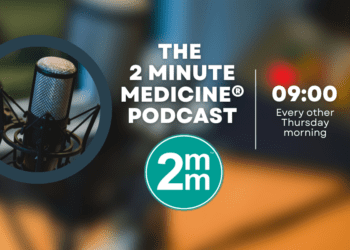Robotic-assisted hysterectomy lacks cost-benefit
Feb 20th – The perioperative outcomes from robotically-assisted hysterectomy for benign gynecologic disease are similar to those for laparoscopic hysterectomy; however, the costs are much higher.
[tabs tab1=”2MM Rundown” tab2= “2MM Full Report”]
[tab]
Image: PD
1. The use of robotically-assisted hysterectomy for benign gynecologic disease has been increasing despite limited evidence demonstrating clinical benefit.
2. The perioperative outcomes from robotically-assisted hysterectomy for benign gynecologic disease are similar to those for laparoscopic hysterectomy; however, the costs are much higher.
This study’s population-based analysis demonstrates increasing rate of robotically-assisted hysterectomy for benign disease despite evidence of a similar perioperative morbidity profile as compared to laparoscopic hysterectomy. Of note, the cost for these robotic-assisted procedures is considerably higher, approximated to be up to $2000 more per case, about one third higher than the median cost for laparoscopic hysterectomy. This large study is more generalizable than previous single-institution studies and calls into question the drivers for the increase in number of robotic cases for which there appears to yield no clinical benefit. In clinical practice the clinician should be attuned to industry marketing efforts, surgeon preferences and novel technologies that influence choice, for these do not necessarily herald realized patient benefit. Robotic modalities can help a less-technically able surgeon learn the procedure in less time than the laparoscopic learning curve, but this doesn’t yet necessarily justify the increased fixed and variable costs of employing this technology for hysterectomy. Further comparative effectiveness studies are needed to examine resource allocation questions surrounding more traditional technique surgical training vs. acquiring more robotic machines.
Among limitations, this study did not examine benefits of robotic surgery for patients with certain anatomical challenges, as there may be a role for robotic-assisted hysterectomy in certain patient groups. Surgeon experience was also not a variable in this study. This could be important as robotic surgery outcomes are known to be considerably better at high volume centers by surgeons having more experience. Future studies will hopefully consider such variables in future analyses.
Click to read the study in JAMA
[/tab]
[tab]
Image: PD
1. The use of robotically-assisted hysterectomy for benign gynecologic disease has been increasing despite limited evidence demonstrating clinical benefit.
2. The perioperative outcomes from robotically-assisted hysterectomy for benign gynecologic disease are similar to those for laparoscopic hysterectomy; however, the costs are much higher.
This [retrospective cohort] study of 264,758 adult women among 441 US hospitals who had benign hysterectomies from 2007 to 2010 were classified based on surgical route: abdominal (123,288), vaginal (54,912), laparoscopic (75,761) or robotic-assisted (10,797). With risk adjustment for medical comorbidities, the following outcomes were analyzed: perioperative morbidity, mortality and resource allocation. The data were retrieved from the all-payer Perspective database (Premier).
Over the three years analyzed, robotically assisted hysterectomies increased by 9%, while laparoscopic procedures increased by 6%. Use of vaginal and open procedures both declined by 2 and 13%, respectively. Patients who underwent robotic-assisted hysterectomy were less likely to have a stay longer than 2 days, but rates of perioperative complications were not significantly different between robotic and laparoscopic cohorts.
In sum: This study’s population-based analysis demonstrates increasing rate of robotically-assisted hysterectomy for benign disease despite evidence of a similar perioperative morbidity profile as compared to laparoscopic hysterectomy. Of note, the cost for these robotic-assisted procedures is considerably higher, approximated to be up to $2000 more per case, about one third higher than the median cost for laparoscopic hysterectomy. This large study is more generalizable than previous single-institution studies and calls into question the drivers for the increase in number of robotic cases for which there appears to yield no clinical benefit. In clinical practice the clinician should be attuned to industry marketing efforts, surgeon preferences and novel technologies that influence choice, for these do not necessarily herald realized patient benefit. Robotic modalities can help a less-technically able surgeon learn the procedure in less time than the laparoscopic learning curve, but this doesn’t yet necessarily justify the increased fixed and variable costs of employing this technology for hysterectomy. Further comparative effectiveness studies are needed to examine resource allocation questions surrounding more traditional technique surgical training vs. acquiring more robotic machines.
Among limitations, this study did not examine benefits of robotic surgery for patients with certain anatomical challenges, as there may be a role for robotic-assisted hysterectomy in certain patient groups. Surgeon experience was also not a variable in this study. This could be important as robotic surgery outcomes are known to be considerably better at high volume centers by surgeons having more experience. Future studies will hopefully consider such variables in future analyses.
Click to read the study in JAMA
By Mike Hoaglin and Rif Rahman
More from this author: Corticosteroid injections for tennis elbow associated with poorer recovery versus placebo, Glucose but not fructose reduces cerebral blood flow in appetite and reward centers of brain, Sustained etanercept with methotrexate is effective for achieving low disease activity in moderate rheumatoid arthritis patients
© 2013 2minutemedicine.com. All rights reserved. No works may be reproduced without written consent from 2minutemedicine.com. Disclaimer: We present factual information directly from peer reviewed medical journals. No post should be construed as medical advice and is not intended as such by the authors or by 2minutemedicine.com. PLEASE SEE A HEALTHCARE PROVIDER IN YOUR AREA IF YOU SEEK MEDICAL ADVICE OF ANY SORT. Content is produced in accordance with fair use copyrights solely and strictly for the purpose of teaching, news and criticism. No benefit, monetary or otherwise, is realized by any participants or the owner of this domain.
[/tab]
[/tabs]




